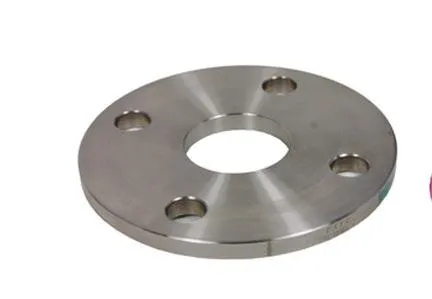-
Cangzhou Yulong Steel Co., Ltd.
-
Phone:
+86 13303177267 -
Email:
admin@ylsteelfittings.com
- English
- Arabic
- Italian
- Spanish
- Portuguese
- German
- kazakh
- Persian
- Greek
- French
- Russian
- Polish
- Thai
- Indonesian
- Vietnamese
- Zulu
- Korean
- Uzbek
- Hindi
- Serbian
- Malay
- Ukrainian
- Gujarati
- Haitian Creole
- hausa
- hawaiian
- Hebrew
- Miao
- Hungarian
- Icelandic
- igbo
- irish
- Japanese
- Javanese
- Kannada
- Khmer
- Rwandese
- Afrikaans
- Albanian
- Amharic
- Armenian
- Azerbaijani
- Basque
- Belarusian
- Bengali
- Bosnian
- Bulgarian
- Catalan
- Cebuano
- China
- China (Taiwan)
- Corsican
- Croatian
- Czech
- Danish
- Esperanto
- Estonian
- Finnish
- Frisian
- Galician
- Georgian
- Kurdish
- Kyrgyz
- Lao
- Latin
- Latvian
- Lithuanian
- Luxembourgish
- Macedonian
- Malgashi
- Malayalam
- Maltese
- Maori
- Marathi
- Mongolian
- Myanmar
- Nepali
- Norwegian
- Norwegian
- Occitan
- Pashto
- Dutch
- Punjabi
- Romanian
- Samoan
- Scottish Gaelic
- Sesotho
- Shona
- Sindhi
- Sinhala
- Slovak
- Slovenian
- Somali
- Sundanese
- Swahili
- Swedish
- Tagalog
- Tajik
- Tamil
- Tatar
- Telugu
- Turkish
- Turkmen
- Urdu
- Uighur
- Welsh
- Bantu
- Yiddish
- Yoruba

Dec . 03, 2024 12:38 Back to list
blind pipe flange
Understanding Blind Pipe Flanges Essential Components in Piping Systems
In the world of piping systems, various components play critical roles in ensuring fluid integrity, system reliability, and safety. Among these components, blind pipe flanges stand out for their specific functionality and importance. This article explores what blind pipe flanges are, their uses, benefits, and considerations in selection.
What is a Blind Pipe Flange?
A blind pipe flange is a type of flange that is used to close off the end of a piping system. Unlike other flanges that connect two sections of pipe or facilitate access to the internal components of a piping system, a blind flange serves the primary role of sealing off a section of the pipeline. Blind flanges are disc-shaped and can be found in various sizes, materials, and pressure ratings to match different piping requirements.
Applications of Blind Flanges
Blind flanges are commonly used in various industries, including oil and gas, water treatment, chemical processing, and power generation. They are primarily employed in situations where a pipe needs to be terminated without needing an access point. Typical applications include
1. Sealing Off Inactive Lines In many industrial settings, certain pipelines may become inactive but need to be maintained for potential future use. A blind flange provides a reliable seal to prevent leaks. 2. Pressure Testing When testing a piping system's integrity under pressure, blind flanges can be used to seal off certain sections of the system, ensuring that pressure can be applied and measured safely. 3. Maintenance and Repair When a section of a pipeline requires maintenance, blind flanges can be installed to isolate that section from the rest of the system, allowing work to proceed without disrupting overall operations.
Benefits of Using Blind Flanges
The use of blind flanges offers several advantages
1. Versatility Blind flanges can be used in a variety of applications, making them a versatile choice for many piping systems. They are available in various ANSI/ASME standards, allowing them to fit numerous applications. 2. Safety By providing a strong seal, blind flanges help prevent leaks and potential hazards associated with the release of pressurized fluids or gases. 3. Cost-Effectiveness Blind flanges can be a cost-effective solution, especially when there is a need for future flexibility in piping configurations without the immediate expense of additional piping and fittings.
blind pipe flange

4. Ease of Installation Blind flanges are relatively easy to install, requiring only bolts to secure them in place, which can lead to reduced labor costs during installation.
Considerations When Selecting Blind Flanges
When choosing a blind pipe flange, several factors must be considered to ensure compatibility with the existing piping system and desired performance
1. Material Blind flanges are available in various materials, including carbon steel, stainless steel, and plastic. The choice of material should depend on the type of fluid being transported, as well as temperature and pressure conditions.
2. Size and Pressure Rating It’s essential to select the appropriate size and pressure rating for the blind flange to ensure it meets the requirements of the piping system. This information is typically referenced in industry standards.
3. Installation Environment Consideration of the environment in which the flange will be installed is crucial. For example, corrosive environments may require specialized coatings or materials for the blind flange to ensure durability.
4. Standards and Compliance Ensure that the selected blind flange complies with industry standards, such as those set by ANSI, ASME, or other relevant organizations, to guarantee safety and functionality.
Conclusion
Blind pipe flanges are indispensable components in the management and operation of piping systems. By providing reliable sealing and closure, they enhance the safety and efficiency of pipelines in various industrial applications. Understanding their functionality, benefits, and selection criteria is essential for engineers and facility managers to ensure optimal system performance and compliance with safety standards.
Latest news
-
ANSI 150P SS304 SO FLANGE
NewsFeb.14,2025
-
ASTM A333GR6 STEEL PIPE
NewsJan.20,2025
-
ANSI B16.5 WELDING NECK FLANGE
NewsJan.15,2026
-
ANSI B16.5 SLIP-ON FLANGE
NewsApr.19,2024
-
SABS 1123 FLANGE
NewsJan.15,2025
-
DIN86044 PLATE FLANGE
NewsApr.19,2024
-
DIN2527 BLIND FLANGE
NewsApr.12,2024
-
JIS B2311 Butt-Welding Fittings LR/SR 45°/90° /180°Seamless/Weld
NewsApr.23,2024











